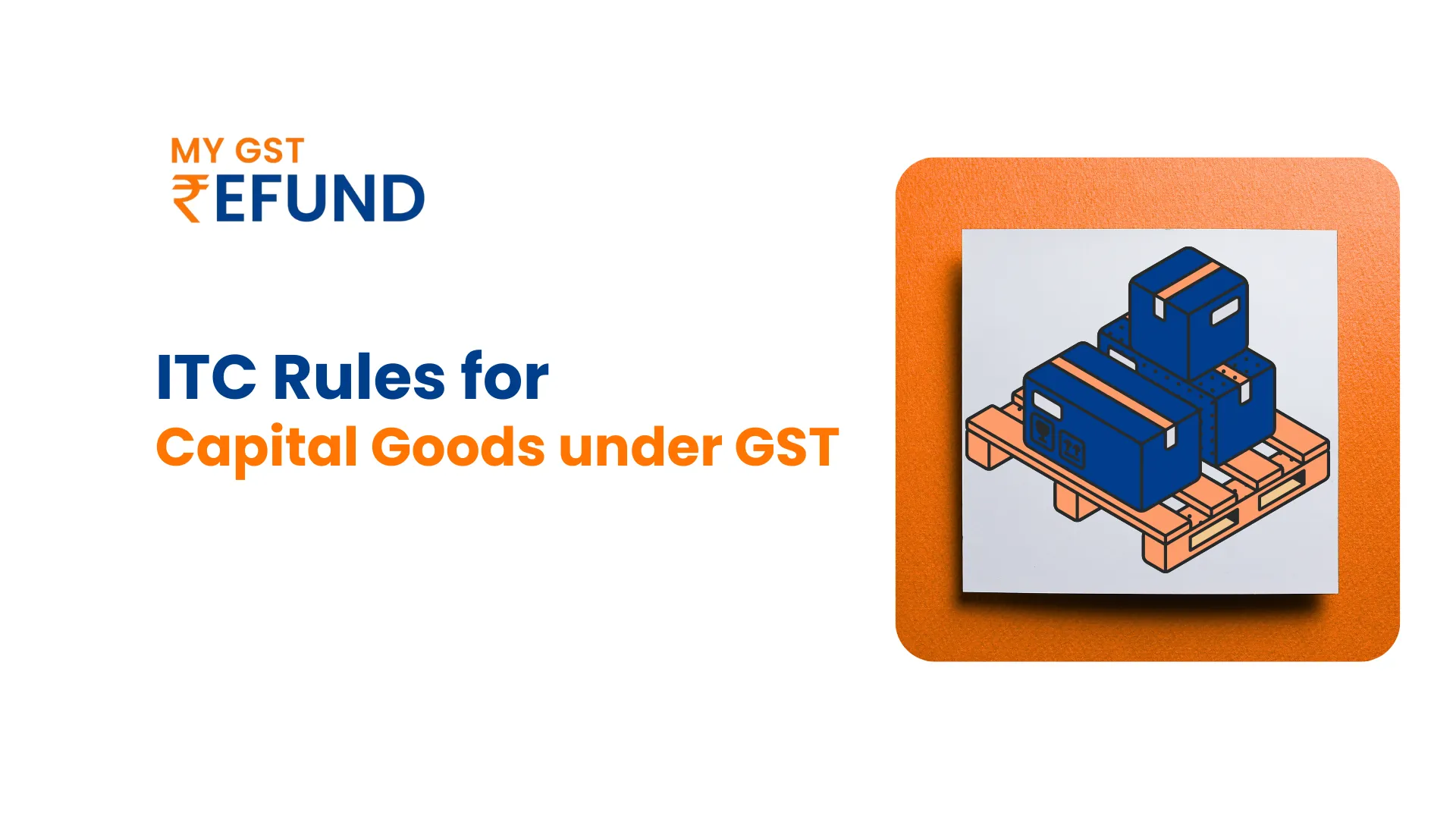ITC Rules for Capital Goods under GST | Complete Guide 2025
Published on: Sat Apr 05 2025
Guide to ITC Rules for Capital Goods under GST
The GST regime has introduced major changes in how companies handle tax credits, particularly in relation to capital goods. It is crucial to understand rules regarding Input Tax Credit (ITC) on capital goods, as it has the potential to adversely affect your company's cash position and overall profitability.
What Are Capital Goods Under GST?
Capital goods are properties such as machinery, equipment, or vehicles used during or in relation to the carrying on of a business and benefiting for more than a year. These are nothing but long-term assets that yield income but do not get depleted right away.
For example, if a factory unit buys a machine to use for production or a transport business purchases heavy-duty trucks for ferrying goods, these qualify as capital goods as per GST.
It is imperative that such assets are capitalized on the books of accounts and are not accounted for as consumables.
Eligibility of ITC on Capital Goods
Claiming ITC on capital goods is easy but based on some conditions. Companies are required to confirm that the capital goods are deployed purely for the business. They, if being deployed partially for private use or in the creation of exempted supplies, limit the ITC.
One of the largest benefits under GST is that the entire ITC of capital goods can be availed upfront — in the same financial year of purchasing the goods. While in the previous tax regimes where credit was spread over years, GST enables companies to reimburse the tax burden immediately and hence enhance liquidity.
But ITC cannot be availed in case the goods belong to the "blocked credit" category. Let's see this in detail.
Blocked Credit for Certain Capital Goods
The CGST Act specifically blocks ITC in certain cases in Section 17(5). If capital goods are used for individual purposes, immovable property construction (except plant and machinery), or motor vehicles for personal use, ITC can't be availed.
For instance, where a company acquires a car for the use of its director, the GST paid on such a purchase cannot be availed of as an input tax credit. In the same manner, ITC is blocked on equipment used in building an office complex except for plant and machinery.
Apportionment and Reversal of ITC on Capital Goods
Not all usage cases are black and white. There are instances when capital goods are utilized for both taxable and exempt supplies.
Businesses have to proportionately reverse ITC in such circumstances according to the GST rules.
Rule 43 of CGST Rules: Apportionment Works
The law under GST has a standard useful life of five years (60 months) assigned to capital goods. The overall ITC is apportioned equally over a period of 60 months.
If a capital asset is used partially for the production of exempt supplies, companies have to reverse ITC proportionately every month based on exempt turnover.
Suppose a machine has ₹120,000 of ITC. The monthly credit is ₹2,000. If the machine is utilized for exempt supplies for 10 months, ₹20,000 has to be reversed over 10 months.
This approach guarantees that ITC is availed only to the extent the asset is utilized for taxable supplies.
Depreciation and ITC: A Warning to Businesses
One of the key rules under Section 16(3) of the CGST Act is depreciation. Businesses need to be careful that if they are availing ITC on the GST portion of capital goods, they should not claim depreciation on that GST amount under the Income Tax Act.
In accounting terms, during the recording of the asset in the books, the GST paid has to be retained separately. In case it was included inadvertently in the value of the asset for depreciation, the related ITC is unavailable.
Accurate accounting treatment is important to prevent loss of genuine input credits.
Sale or Disposal of Capital Goods
What if a company sells off or scraps capital assets on which ITC had already been claimed?
In those situations, GST has to be paid upon sale.
The tax due will be the greater of the GST on the transaction value or the remaining ITC after deducting 5% per quarter (or fraction thereof) from the initial ITC. This helps prevent businesses from taking advantage of both ITC and disposal proceeds without incurring taxes.
Conclusion
Comprehension and implementation of ITC regulations on capital goods are important for every GST-registered enterprise. Permitted full ITC can considerably relieve the working capital strain, but firms need to remain compliant with usage requirements, reversal obligations, and proper accounting procedures.
Mistakes such as claiming ITC on blocked goods or incorrectly depreciating the GST component can result in disputes and penalties. By adhering strictly to the GST regime, companies can maximize their input credits and ensure smooth tax compliance.
Also Read : Auto-Drafted GSTR 2B vs. GSTR 2A: Key Differences Explained
Related Posts





